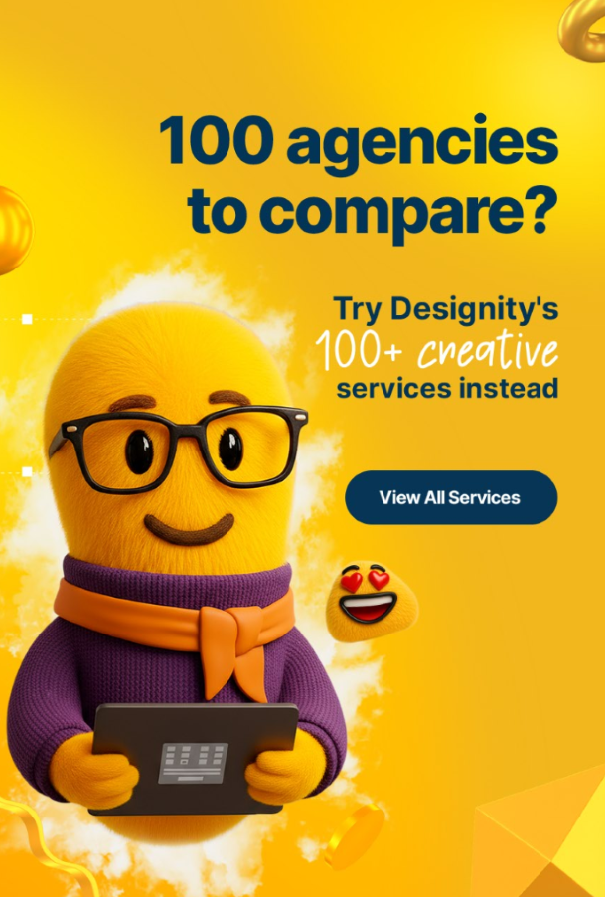If one of your New Year's resolutions for 2024 is to grow your business, then you’re probably not alone!
But gearing up for the journey of business expansion requires a bit more than just determination and a rough goal. You’re going to need a strategic roadmap to help you reach your goals and achieve success!
This is where the Product Market Growth Matrix can help! This tried-and-true guide is designed to help businesses navigate their growth and unlock their true potential.
So, if you’re ready to level up your business and you’re looking for some guidance to help you do it, today’s blog is the blog for you. We’re diving into the growth matrix and bringing you some advanced strategies to unlock growth opportunities and take your business to new heights!
What is The Product Marketing Growth Matrix?
Any company that wants to grow and keep finding success is going to need to focus on growth strategies.
The Product Market Growth Matrix, also known as the Ansoff Matrix, is one such strategy businesses all over use to analyze and plan out these growth strategies.
Introduced by Igor Ansoff in 1957, this matrix provides a framework for businesses to consider the relationship between their existing products and services, new products or services, and current and new markets.
Understanding the Ansoff Product Market Growth Matrix

Complicated, we know. We’ll break it down for you now.
Ansoff’s Product Market Growth Matrix is made up of 4 four stages, as shown in the image above. Here’s what they look like:
- Market Penetration (Existing Products, Existing Markets)
- Market Development (Existing Products, New Markets)
- Product Development (New Products, Existing Markets)
- Diversification (New Products, New Markets)
The matrix provides a structured approach for decision-making in terms of market and product expansion, allowing companies to evaluate different growth opportunities and formulate strategic plans based on their current position and objectives.
Product Market Growth Matrix Strategies to Successfully Grow Your Businesses
Now that you’re better acquainted with the growth matrix, here are strategies within it to help you guide your business toward sustainable expansion!
Stage 1: Market Penetration
Your focus during market penetration should aim to maximize the sales of existing products or services within your current markets.
The goal here is to increase your market share, expand your customer base, and enhance the usage of your offering to your existing customers.
Here are some ways to help you achieve this:
Market Penetration Strategies
- Increase Your Marketing Efforts — Launching targeted ad campaigns and being active on social media can help you boost your brand visibility to engage with a broader audience and increase your market presence.
- Sales and Specials — Introduce limited-time promotions, discounts, or bundled offerings that can help to attract new customers and stimulate your sales.
- Merging or Acquiring — If your company is in the position to do so, merging with or acquiring a competing business in the same market can consolidate market presence and provide access to a new customer base and expertise.
- Loyalty Programs — Implementing loyalty programs that offer exclusive perks, discounts, or early access can improve customer retention and encourage more repeat sales.
- Adjusting Prices — Some market research can help you identify some competitive pricing strategies so that you can keep yourself more competitive. Decreasing prices on products will help to attract new customers in the same market segment.
- Improving Product Features — Gather feedback from customers to identify areas for product improvement and improve your product features or introduce new functionalities based on your target market’s preference to appeal to more customers.
- Refine Your Distribution Process — Optimizing your distribution channels to streamline the product delivery process and exploring new partnerships with logistics providers can boost your delivery speed and increase customer satisfaction with your brand.
“Real-World” Example
Create-ity, a super dynamic all-in-one marketing and design platform, is gearing up for some significant business growth and expansion in the next five years. They are using Ansoff’s Product Growth Matrix as a roadmap for their success and are getting started with the first stage: market penetration.
First, Create-ity intensifies its marketing efforts with targeted Google Ad and YouTube ad campaigns and a whole slew of fresh and exciting visual and written content. They also start an email marketing campaign and open up an account on Meta Threads, Twitter, and TikTok to get their amazing content in front of more and more customers.
Once they have some attention, they start running Christmas and New Year’s specials and “one week only” discounts on market asset creation to create a buzz around their awesome services.
Folks start to take notice and Create-ity’s customer base starts expanding, which sets them up for the next stage …
Stage 2: Market Development

In the second stage of the Product Market Growth Matrix, the focus shifts from increasing sales and customer base to broadening your brand’s horizons and exploring new opportunities.
The goal now is to introduce existing products or services to new markets, geographical areas, or customer segments.
Here are some strategies for navigating your market development:
Market Development Strategies
- Enter New Markets or Demographics — Use your market and competitor research to identify any untapped markets or customer demographics where your services could potentially meet a demand or fulfill a need. Create user personas of this new audience you wish to reach to better understand their preferences and behaviors.
- Enter a New Geographic Area — Fuel your brand’s growth by going international! Explore untapped opportunities for your brand in foreign markets or, if it’s more feasible, expand to new geographic areas within your own country.
- Target Different Customer Segments — Use your market research to identify and target different customer segments that haven’t experienced your brand. Be sure to adjust your marketing strategies and user personas to resonate with these new segments!
- Target Different Demographics — If there are any demographics that your brand has previously overlooked, it's time to recognize and start addressing their needs as well. Adapt your services to cater to these specific groups and start further expanding your customer base.
“Real-World” Example
Things have been going well lately for Create-ity.
In the past year, they have significantly increased their sales, strengthened their online and social media presence, and drawn in many new customers.
But Create-ity isn’t done and it knows that its home market is just the beginning of the journey. Soon, they set their sights on international expansion.
After some thorough market research, they identify key demographics in foreign markets and then launch localized campaigns with their awesome content and advertisements now translated into different languages and tailored to suit the needs of these new, previously untapped markets.
Create-ity is moving and shaking and its international campaigns soon start seeing meaningful growth …
Stage 3: Product Development
In the third stage of the matrix, the focus pivots towards creating and offering new products or services to your existing markets.
The goal here is to capitalize on your existing customer base by providing them with fresh new offerings.
Here are some strategies to help you make that happen:
Product Development Strategies
- Invest in Research and Development — Dedicate resources to thorough research and development to keep your new offerings aligning with emerging market trends and your customers' ever-evolving demands.
- Expand Your Product Line — Expand your product line with variations of popular products or other products that complement your existing ones to continue to cater to the diverse needs of your customer base.
- Enhancing Existing Features — Keep your products fresh and relevant by continuously enhancing your product’s features, functionalities, and design based on your customer feedback and current market trends.
- Repackage Products — Give your existing products a makeover on the shelves through new branding, updated packaging, or even bundling to keep your existing customer’s attention and win over new ones.
- Acquire Rights for New Products — Explore any opportunities to acquire the rights to product and sell successful products from other brands and introduce a proven new product to your existing market.
- Brand a 3rd-Party Product — Put your head together with third-party providers and brand their products under your company’s umbrella to offer a more diversified range without the need for in-house development.
“Real-World” Example
Create-ity is doing very well these days.
Emboldened and feeling fine after the success of their international campaigns, Create-ity, enters the product development phase!
They pour resources into their research and development team and, after some time, decide that creating their own social media platform is a great way for them to expand their offerings and engage existing followers in a new and exciting way!
SocialBlastMaster by Create-ity is launched with much anticipation and buzz! It’s got all of the pro features of Facebook and Instagram, is easier to use, and allows its users to collaborate on platforms like Photoshop, Premiere Pro, and Illustrator!
With the launch of their new social media platform, Create–ity also goes through a rebranding, debuting a sleek and edgy new look. This transformation extends not only to their website but also to the brand-new branch of their brand, a site where design and art-based products created by their employees can be sold!
Customers are eating it up and SocialBlastMaster is soaring in app sales!
Stage 4: Diversification
The final stage of the Product Market Growth Matrix marks a bold move for any brand!
This stage involves the development and introduction of new products or services to entirely new markets. The move comes with a high level of risk and requires a thorough understanding of both your new product and your new market.
However, if executed successfully, it can result in huge returns on investment for your brand.
Here are some strategies to help you succeed:
Diversification Strategies
There are two types of diversification and we’ll explore them now!
- Related Diversification — This involves exploring new revenue streams that are directly related to your initial product or service or introducing complementary products or services that resonate with your existing customer base.
- Unrelated Diversification — Unrelated diversification is venturing into entirely new revenue streams or expanding into new geographic markets. This strategy involves entering markets or offering products that are not directly related to your current business but provide new opportunities for growth and profitability.
“Real-World” Example
After the success of SocialBlastMaster and their employee-created products, Create-ity’s sales are through the roof and, always ones to push the envelope, Create-ity decides to expand even further.
First, Create-ity ventures into professional photography and opens “Snaptastic Creations,” a company specializing in wedding and special event photography, bringing Create-ity to a brand-new market seeking to capture life’s precious moments in the most aesthetically pleasing way possible.
Snaptastic Creations does so shockingly well that Create-ity decides to diversify its offerings even further. The next year, Create-ity ventures into the world of fine dining by opening The Refined Palette, the country’s first design-themed restaurant featuring artwork and menus designed by local artists and a “paint by numbers” activity to ensure that diners may be hungry as they wait for their food, but never bored.
Create-ity is living its best life.
Benefits of the Ansoff Matrix

Here are some additional benefits of using the Ansoff Matrix as a roadmap to guide your brand’s growth.
1. Clear Growth Strategies — The matrix provides a clear and structured framework for considering growth strategies, categorizing them into four distinct areas.
2. Risk Management — It helps assess and manage risks associated with different growth strategies, aligning choices with the business's risk tolerance.
3. Diversification Guidance — The matrix offers insights into both related and unrelated diversification strategies, aiding businesses in expanding product offerings or entering new markets.
4. Strategic Planning — Valuable for strategic planning, prompting businesses to think beyond current markets and products, fostering a forward-looking perspective.
5. Resource Allocation — Categorizing strategies based on market and product helps allocate resources effectively, focusing efforts on areas with the highest growth potential.
6. Market Understanding — Encourages a comprehensive analysis of customer needs, preferences, and behaviors, leading to more customer-centric strategies.
7. Flexibility — Adaptable for businesses of various sizes and industries, accommodating different contexts and growth aspirations.
8. Competitive Advantage — Contributes to the development of a sustainable competitive advantage by prompting organizations to innovate and differentiate in the market.
Create Your Own Product Growth Matrix
Convinced and ready to create a matrix of your own? It’s a simple thing to do!
Just follow the steps below:
1. Choose Your Design Tool
Pick a design tool that suits your preferences and expertise. If you don’t have any kind of design experience, even a pencil and paper will work just fine here.
If you do have a bit of skill, popular design choices include Adobe Illustrator or Photoshop or online tools like Canva. The key here is to use a tool that lets you create a clear and visually appealing matrix to share with your team.
2. Create the Table
Begin by creating a table with two axes, representing products and markets.
Draw a horizontal line to represent different product options and a vertical line for various market segments. The point where these lines intersect will create four quadrants, one for each of the growth stages.
3. Apply Labels
Label each quadrant with the corresponding growth strategy. Be sure to clearly mark the horizontal axis with “Products” and the vertical axis with “Markets.”
Label each quadrant with its respective strategy to make it easy to identify which part of the matrix represents each growth approach.
4. Add the 4 Quadrants
Place the four growth stages in their quadrants: Market Penetration in the lower left, Market Development in the upper left, Product Development in the lower right, and Diversification in the upper right.
As you fill in each quadrant, consider the specific actions and initiatives you’ll associate with each strategy to turn the matrix into an accurate overview of your plans.
<div class="c-blog_comp-cta cc-component-1"><div class="c-blog_comp-cta-left"><div class="c-blog_comp-cta-left-wrap"><img src="https://global-uploads.webflow.com/61cdf3c5e0b8155f19e0105b/6369722e59155470b6840033_Potential-clients.png" loading="lazy" alt="" class="c-blog_comp-cta-left-img"></div></div><div class="c-blog_comp-cta-right"><div class="c-blog_comp-content"><div class="c-text-wrapper cc-mb-32"><div class="c-title-4 cc-bold"><strong>Want to save money without sacrificing the quality?</strong></div></div><div class="c-text-wrapper"><div class="c-text-2">Say goodbye to traditional, expensive agencies and unreliable marketplaces. Say hello to Designity.<br></div></div></div><div class="c-blog_comp-wrapper"><a href="/pricing" target="_blank" class="c-button cc-primary cc-inverted w-button"><strong>Get Your 2-Week Trial</strong></a></div></div></div>
Looking for a Partner to Grow With?
Growing your business can be a risky thing, but with the right marketing strategies, the right content, and the right experts on your side, your brand can navigate uncharted waters and come out successful on the other side.
And if you’re on the hunt for a partner to help you ideate and implement those right marketing strategies, create the kind of creative content that attracts new customers, and be your partner in growth, then we have a suggestion.
Partner with Designity.
Partnering with Designity puts not only a marketing and design expert Creative Director on your team but also gives you access to a talent pool made up of the top 3% of US-based creatives, everyone from designers to copywriters to branding experts and more.
With all of this expertise and talent in your corner, your brand’s growth journey can be made smoother and more efficient — we’ll handle the marketing, and you focus on everything else you need to do to broaden your company’s reach and expand your customer base.
So, why not take some of the stress out of growing your business?
Have a look at our portfolio and see if our style is a fit for your brand. If it is, book your demo call today. It only takes a few minutes and when you’re done, test-drive our services with a two-week, no-obligation trial so that we can prove we’re the partners you need to give your brand the best marketing collateral and strategies it can have.
What are your growth plans for 2024?










